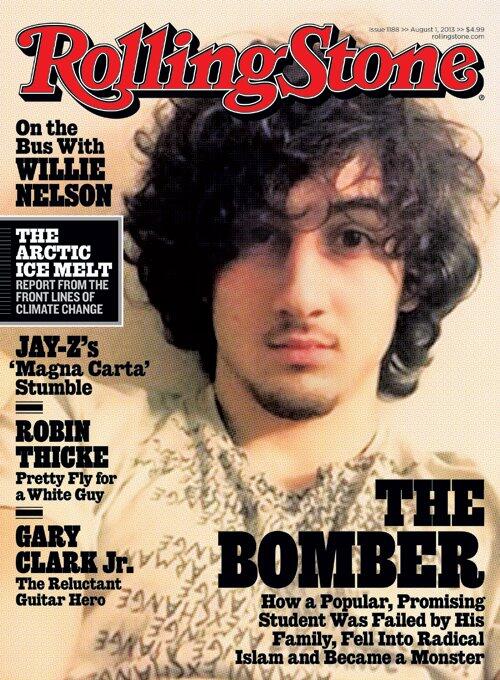Notes
Rolling Stone Boston Bomber Cover. Hmm, We Liked It.

I think the cover works, consistent with the premise: “a riveting and heartbreaking account of how a charming kid with a bright future became a monster.”
Rather than write off these people as evil and “other,” what distinguishes us as a civilized society is the attempt to understand who and why. (It’s what I was trying to get at with that suicide bomber pic the other day.) I mean, why did someone as personable as Dzhokhar Tsarnaev go over to the dark side? Is it such an act of humanity just to realize it’s not a one word answer, especially if that word is “Islam”? Is there no relevance to the implosion of the Tsarnaev family, that crazy hostile mother and the residual weight of Jahar’s relationship with his terror of a brother? (Before dispensing with the cover as completely gratuitous, by the way, it’s worth noting it does legitimately exploit the sympathy Jahar engendering on the lam based on speculation he might have been under his brother’s power.)
Now, does that justify framing the kid as a heartthrob — especially on Boston newsstands? Of course not. But in the media sphere, the devices are pretty staked out by now. As such, exaggerating and elevating the kid’s likeability might be justifiable if it leads citizens beyond the knee-jerk opposite — framing these young men as simply monsters — to look and think more deeply.
In fact, I think the next candidate for the treatment (September, perhaps, as the next president of the Seminole Country Chamber of Commerce?) should be George Zimmerman. If a general haze surrounding the man’s personality had even a little to do with the verdict in Florida this week, then let the closer inspection hang him.
UPDATE: Here’s the link to the story preceded by an editor’s intro addressed, apparently, to the criticism of the cover.
(illustration: Sean McCabe)
Reactions
Comments Powered by Disqus